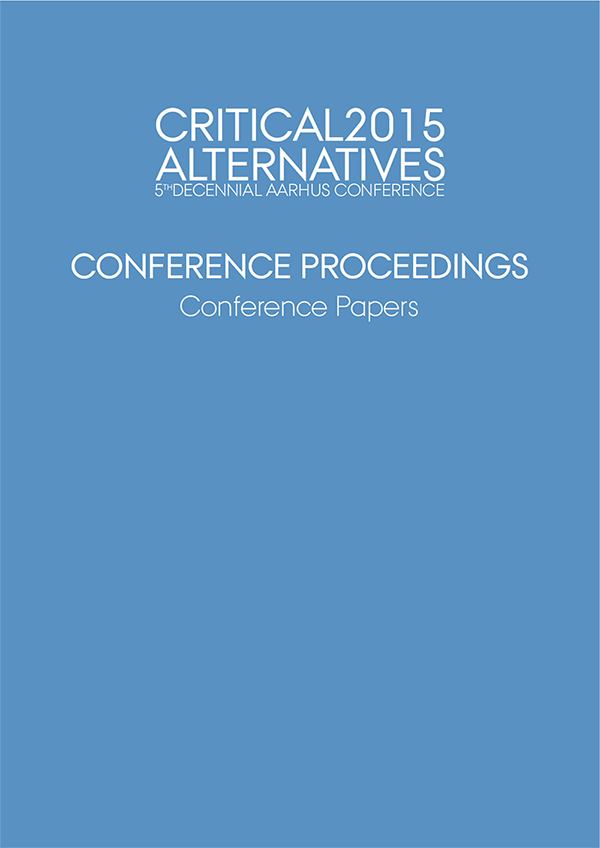Networked Privacy Beyond the Individual: Four Perspectives to ‘Sharing’
DOI:
https://doi.org/10.7146/aahcc.v1i1.21300Nøgleord:
Privacy, interpersonal boundary regulation, social network site, Facebook, Last.fm, CouchsurfingResumé
Synthesizing prior work, this paper provides conceptual grounding for understanding the dialectic of challenges and opportunities that social network sites present to social life. With the help of the framework of interpersonal boundary regulation, this paper casts privacy as something people do, together, instead of depicting it as a characteristic or a possession. I illustrate interpersonal aspects of networked privacy by outlining four perspectives to ‘sharing’. These perspectives call for a rethink of networked privacy beyond an individual’s online endeavors.
Referencer
Altman, I. (1975). The environment and social behavior: Privacy, personal space, territory, crowding. Monterey, CA: Brooks/Cole Pub. Co.
Altman, I., & Gauvain, M. (1981). A cross-cultural and dialectic analysis of homes. In Spatial representation behavior across the life span: Theory and application. New York: Academic Press.
boyd,d.(2008).Whyyouth♥socialnetworksites:The role of networked publics in teenage social life. In D.
Buckingham (ed.), Youth, identity, and digital media (pp. 119–142). Cambridge, MA: MIT Press.
Ellison,N.B.,&boyd,D.M.(2013).Socialitythrough social network sites. In W. H. Dutton (ed.), The Oxford handbook of Internet studies (pp. 151– 172). Oxford University Press.
Lampinen,A.(2014).AccountSharingintheContextof Networked Hospitality Exchange. In Proceedings of the 2014 Conference on Computer-Supported Cooperative Work (pp. 499–501). ACM.
Lampinen,A.,Tamminen,S.,&Oulasvirta,A.(2009). All my people right here, right now: Management of group co-presence on a social networking site. In Proceedings of the 2009 International Conference on Supporting Group Work (pp. 281–290). ACM.
Lampinen, A., Lehtinen, V., Lehmuskallio A., & Tamminen, S. (2011). We're in it together: Interpersonal management of disclosure in social network services. In Proceedings of the 2011 Annual Conference on Human Factors in Computing Systems (pp. 3217–3226). ACM.
Newell,P.B.(1995).Perspectivesonprivacy.Journal of Environmental Psychology, 15(2), 87–104.
Nippert-Eng,C.E.(1996).Homeandwork:Negotiating boundaries through everyday life. Chicago: University of Chicago Press.
Palen, L., & Dourish, P. (2003). Unpacking privacy for a networked world. In Proceedings of the SIGCHI conference on Human factors in computing systems (pp. 129-136). ACM.
Petronio, S. S. (2002). Boundaries of privacy: Dialectics of disclosure. Albany, NY: State University of New York Press.
Petronio, S. (2013). Brief status report on communication privacy management theory. Journal of Family Communication, 13(1), 6-14.
Silfverberg, S., Liikkanen, L.A., & Lampinen, A. (2011). ‘I'll press play, but I won’t listen’: Profile work in a music-focused social network service. In Proceedings of the 2011 Conference on Computer- Supported Cooperative Work (pp. 207–216). ACM.
Stern, S. (2008). Producing sites, exploring identities: Youth online authorship. In D. Buckingham (ed.), Youth, identity, and digital media (pp. 95–117). Cambridge, MA: MIT Press.
Uski, S., & Lampinen, A. (2014). Social norms and self- presentation on social network sites: Profile work in action. New Media & Society.
Vitak, J. (2012). The impact of context collapse and privacyonsocialnetworksitedisclosures.Journalof Broadcasting & Electronic Media, 56(4), 451-470.




